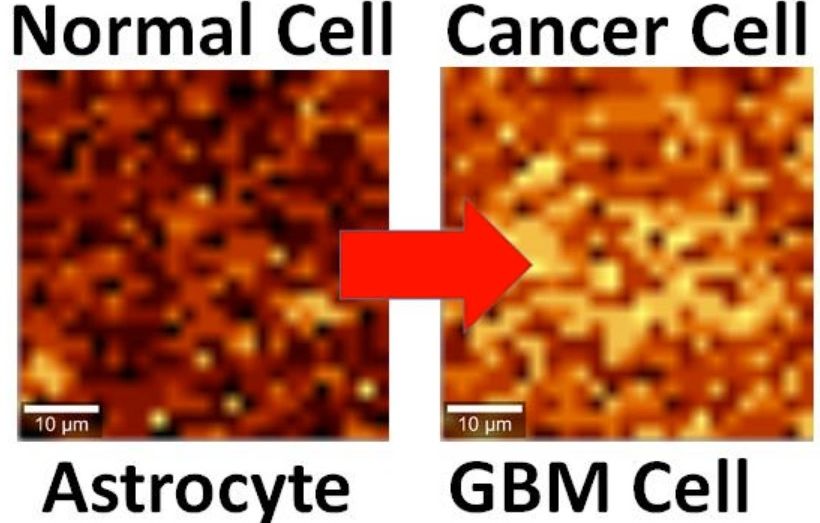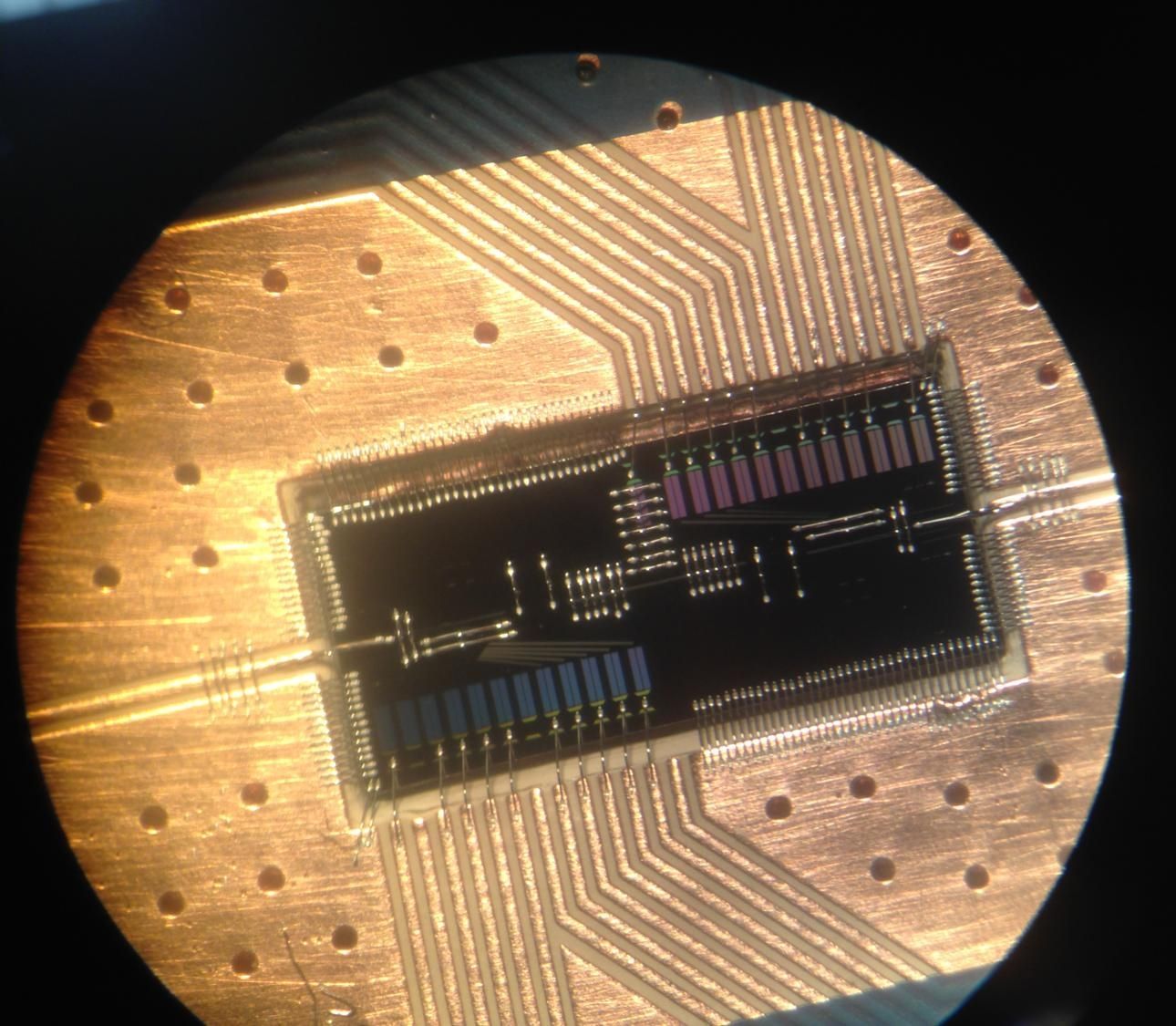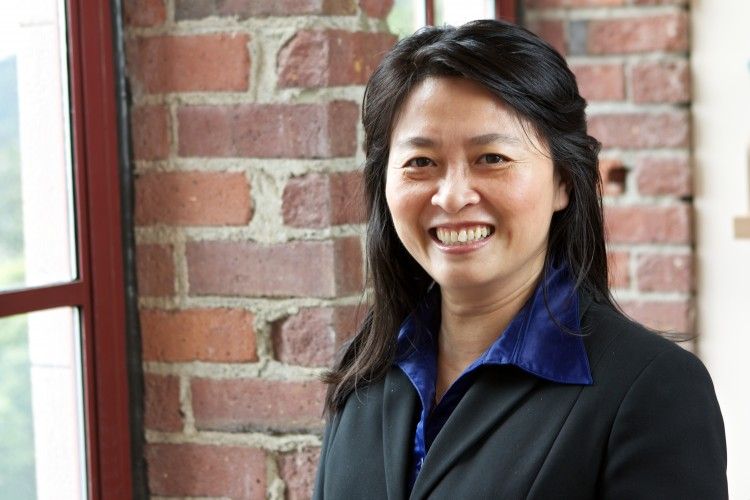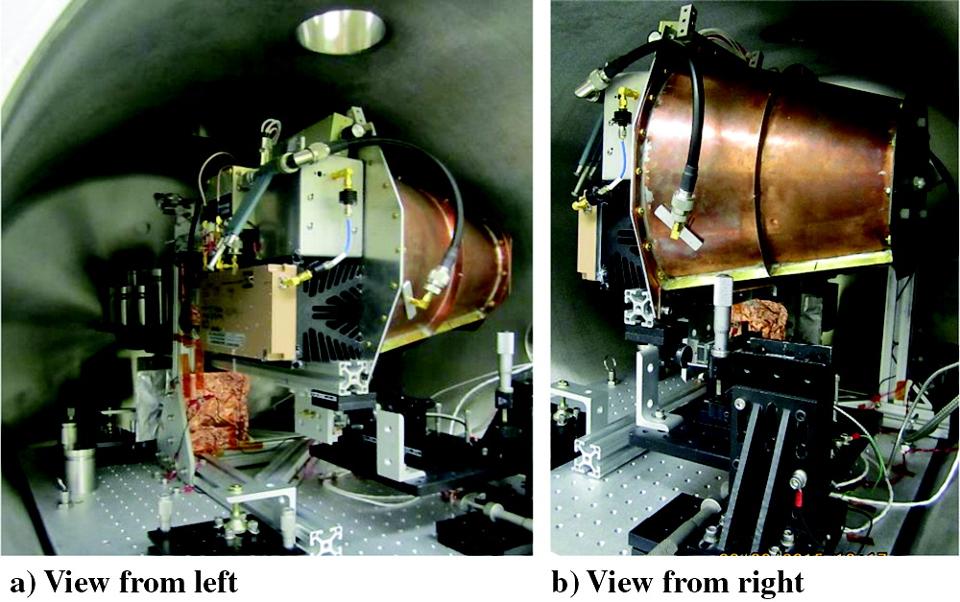Definitely; why we been telling businesses the importance of BMI for their environments.
A site dedicated to the sciences, recent scientific discoveries and advances.
Definitely; why we been telling businesses the importance of BMI for their environments.
A site dedicated to the sciences, recent scientific discoveries and advances.

Graphene has already proven its importance to brain implants as well as other Synbio technology.
By interfacing brain cells with graphene, University of Illinois at Chicago researchers have differentiated a single hyperactive Glioblastoma Multiforme cancerous astrocyte cell from a normal cell in the lab — pointing the way to developing a simple, noninvasive tool for early cancer diagnosis.
In the study, reported in the journal ACS Applied Materials & Interfaces, the researchers looked at lab-cultured human brain astrocyte cells taken from a mouse model. They compared normal astrocytes to their cancerous counterpart, highly malignant brain tumor glioblastoma multiforme.

In a step that brings silicon-based quantum computers closer to reality, researchers at Princeton University have built a device in which a single electron can pass its quantum information to a particle of light. The particle of light, or photon, can then act as a messenger to carry the information to other electrons, creating connections that form the circuits of a quantum computer.
The research, published in the journal Science and conducted at Princeton and HRL Laboratories in Malibu, California, represents a more than five-year effort to build a robust capability for an electron to talk to a photon, said Jason Petta, a Princeton professor of physics.
“Just like in human interactions, to have good communication a number of things need to work out—it helps to speak the same language and so forth,” Petta said. “We are able to bring the energy of the electronic state into resonance with the light particle, so that the two can talk to each other.”

Our report on Naturally Better Security dove deep into ways quantum effects can be leveraged to enhance real world cybersecurity. It was our most popular post in November 2016 and the feedback we received was taken as a signal that we should produce more on what CTOs should know about the quantum world. With this post we are kicking off a series of five pieces that will dive into quantum effects. This first post tackles some foundational background that puts the science into a historical context. The second one will discuss the current revolution in quantum computing. The third focuses on security concerns. The forth dives into quantum key distribution. The fifth hits on the “so-what” of the current revolution in terms of security.
So first, foundational background on quantum mechanics.

Italy’s Campi Flegrei may be awakening from a long slumber, scientists warn.

“Bankers will become dinosaurs.” #AI article from The Guardian. https://www.theguardian.com/technology/2016/dec/22/bridgewat…management #Transhumanism
The company is already highly data-driven, with meetings recorded and staff asked to grade each other throughout the day using a ratings system called “dots”. The Systematized Intelligence Lab has built a tool that incorporates these ratings into “Baseball Cards” that show employees’ strengths and weaknesses. Another app, dubbed The Contract, gets staff to set goals they want to achieve and then tracks how effectively they follow through.
These tools are early applications of PriOS, the over-arching management software that Dalio wants to make three-quarters of all management decisions within five years. The kinds of decisions PriOS could make include finding the right staff for particular job openings and ranking opposing perspectives from multiple team members when there’s a disagreement about how to proceed.
The machine will make the decisions, according to a set of principles laid out by Dalio about the company vision.
“It’s ambitious, but it’s not unreasonable,” said Devin Fidler, research director at the Institute For The Future, who has built a prototype management system called iCEO. “A lot of management is basically information work, the sort of thing that software can get very good at.”
And, who said we didn’t have motion pictures with color and sound together before 1931!
Believed to be the first ever, or at least oldest surviving, film produced with both color and sound. The color was made by hand-painting the individual frames of originally black & white film. The sound came from an accompaniment of a sound-on-cylinder recording of Benoit Constant Coquelin’s voice reciting one of Cyrano’s speeches.
Cyrano de Bergerac is a play written in 1897 by Edmond Rostand. Although there was a real Cyrano de Bergerac, the play is a fictionalization of his life that follows the broad outlines of it.
http://www.imdb.com/title/tt0395983
CHANGE BEFORE GOING PRODUCTIONS:

